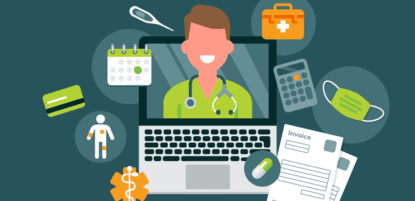Payment reconciliation involves ensuring that balances are correct against processed payments. When handled manually, it can be time-consuming and error-prone, as it involves navigating multiple platforms and payment types. This challenge increases even more as a business expands and payment volumes rise or fluctuate.
This post covers the ins and outs of payment reconciliation in accounts payable departments and how modern platforms and automation can help streamline the AP process and reduce errors.
Key takeaways
- Payment reconciliation is the process of verifying bank account balances against the latest payment information (or transactions).
- Payment reconciliation helps accounting teams save time, reduce errors and fraud, simplify cash flow management, and improve visibility into supplier payments.
- Manual payment reconciliation is more likely to suffer from errors and require much more time and energy to maintain.
What is payment reconciliation in accounts payable?
The payment reconciliation process in accounts payable involves verifying that bank account balances are accurate against the latest payment information (or transactions). The frequency of this process depends upon the organization and its transaction cadence, but daily, weekly, and monthly routines are typical. Often, the process is slightly different for each payment type as well, with ACH payments requiring a reconciliation process different from check payments, and so on.
What is automated payment reconciliation?
Automated payment reconciliation involves the use of software to identify and connect financial transactions across different systems, processes, and bank records. Automation can be employed at the individual level, for each bank account and payment method, or en masse for all payment methods.
Why is automated payment reconciliation important?
The goal of automated payment reconciliation is to streamline the matching of incoming payments with invoices, reducing the need for human oversight and making it easier to notice discrepancies in the data. This is important because it can help drive a number of benefits for organizations, including but not limited to cutting down on time and costs, mitigating human errors, and improving cash flow visibility and management.
Examples of payment reconciliation
The process of payment reconciliation begins with open bills and invoices in a business’s accounts payable (AP) system that indicate the need to pay suppliers for services or products. Businesses then execute payments against the open bills from suppliers. When those payments are processed, the AP department must ensure their records are accurate to prevent any underpayments or overpayments.
The bills are then marked as paid within the ERP system, and the designated bank account will reflect the associated payment transactions. Payment reconciliation involves double-checking that all the numbers come out right in the end, and it is critical to maintain the correct bank balances and account for all payments.
The exact payment reconciliation process varies depending on the payment type. For example, ACH payments may be reconciled soon after they are made since they appear on the bank record after initiating them. Meanwhile, check payments take longer to reconcile since they don’t appear until the payee has received and deposited the check. In fact, there are often slightly different processes needed for each type of payment, including:
- Check
- ACH
- Credit cards
- Virtual cards
- International transactions
An AP automation solution, like MineralTree, which processes all domestic transactions as batch payments, can streamline the reconciliation process. This is because it withdraws all the payment funds via ACH ahead of time, and then handles the implementation of payments on the organization’s behalf to suppliers across their preferred formats.
How does payment reconciliation work? 4 steps
The basic process of payment reconciliation requires connecting and comparing numbers from the ERP system with the bank ledger. Finance teams can use a bank feed to verify and track payments against accounts.
Here’s a step-by-step breakdown of the process:
1. Pay open bills
The first step of the payment reconciliation process is to pay any outstanding bills. Start by identifying the open bills that need to be paid, typically based on payment terms and supplier contracts, then verify the amounts and due dates to ensure accuracy.
2. Combine bills for a supplier
Second, group multiple bills for a supplier into one payment to simplify the process and reduce transaction fees, or process a separate payment for each bill.
3. Initiate payment
Next, initiate payment by writing a check or sending an ePayment (ACH, credit, debit, virtual card, or wire).
4. Mark bills and review bank feed
Lastly, mark each bill in the ERP system as paid after processing payments. Then check your business’ bank feed to tie the payments to any ERP transactions to ensure everything was processed correctly.
AP automation platforms like MineralTree can simplify reconciliation by automating the AP process from invoice capture through payment execution. For example, MineralTree’s platform initiates a single debit transaction for a payment batch of all the bills upon successful payment processing, syncing information automatically between the AP and ERP systems.
6 types of payment reconciliation
There are several kinds of payment reconciliation, all dependent on the needs of the business and finance teams. Here are some of the most common types of payment reconciliation.
Bank reconciliation
Bank reconciliation is the most common type, in which an organization compares its internal financial records with the bank statement to ensure that they match.
Accounts receivable reconciliation
Accounts receivable reconciliation is the process of matching customer payments and receipts with outstanding invoices to ensure that the organization has made and collected the correct payment.
Accounts payable reconciliation
Accounts payable reconciliation involves matching vendor invoices and payments to ensure that payments made by the organization align with outstanding and completed invoices.
Credit card reconciliation
Credit card reconciliation involves comparing a credit card statement to your internal records to make sure that all of the charges and payments have been recorded and documented correctly.
Intercompany reconciliation
This type of reconciliation involves reconciling financial transactions between various entities within the same organization, including subsidiaries, branches, or divisions.
General ledger reconciliation
General ledger reconciliation is a comprehensive type of reconciliation that involves several of the aforementioned types of payment reconciliation. With general ledger reconciliation, organizations reconcile individual accounts within the general ledger and cross-compare with the corresponding supporting documents. This process ensures that all transactions are recorded correctly within the general ledger.
Advantages of payment reconciliation
Payment reconciliation is a vital part of the AP process because it helps ensure books remain in order. There are many benefits of payment reconciliation, including:
Time savings
Payment reconciliation automates the payment matching process so invoices are correctly matched to their corresponding payments. This eliminates the need for manual data entry and the need for tedious cross-referencing from invoice to payment details.
Reduces errors
Payment reconciliation can help detect discrepancies or errors within the AP process, including duplicate payments, unauthorized payments, unusual payment patterns, or missing documentation. This insight not only reduces errors within the payment process but can also help AP teams detect payment fraud that may otherwise have gone unnoticed.
Improved cash flow
Payment reconciliation provides AP teams with real-time insights into payment status, which can help finance teams accurately measure and manage cash flow. In addition, payment reconciliation can help organizations ensure that their financial records are accurate, which helps facilitate more informed decision-making regarding cash flow forecasting and management.
Enhanced visibility
Payment reconciliation provides a comprehensive view of all vendor payments, allowing finance teams to manage vendor relationships better, negotiate better payment terms, and promptly address payment inquiries.
Companies that perform manual payment reconciliation are more likely to suffer from errors. Additionally, manual processes require much more time and energy to maintain as AP teams must navigate multiple platforms to track invoice payments and bills. Meanwhile, automating the accounts payable workflow streamlines this process, saving companies significant time and valuable resources.
Companies that perform manual payment reconciliation are more likely to suffer from errors. Additionally, manual processes require much more time and energy to maintain as AP teams must navigate multiple platforms to track invoice payments and bills. Meanwhile, automating the accounts payable workflow streamlines this process, saving companies significant time and valuable resources.
Challenges in payment reconciliation
Payment reconciliation is often a heavy pain point for organizations, particularly those that handle more than 500 payments per month. Recent supply chain disruptions have aggravated the process even more due to resulting delivery and payment delays. Unfortunately, these challenges compound when reconciliation is handled manually.
Manual payment reconciliation leads to the following additional challenges:
Time-consuming processes
Payment remittance is a slow process that depends on human labor. Additionally, AP teams commonly have to answer questions from their suppliers, resulting in more time spent answering questions than focusing on improving the AP process. Remittance questions are the third most common AP-related inquiries that respondents receive from their suppliers.
Prone to mistakes
Human errors are common, causing duplicative work. Getting the right information spread across multiple platforms can lead to mistakes, which may negatively impact supplier relationships
Lengthy audits
AP audits can be time-consuming if the payment reconciliation is not done correctly. An audit is often done by a third party or internal team to check a company’s financial statements. A time-consuming audit can mean higher costs for your organization since auditors have to go beyond their budgeted hours.
Increased fraud risk
Suspicious activity is more difficult to detect across a manual payment reconciliation process, increasing the risk of fraud.
Cash management
Manual payment reconciliation leads to cash management problems since the business may not have an accurate record of how much cash is available on hand.
Payment reconciliation best practices and tips
Use the best practices and tips below to improve your payment reconciliation process.
Invest in an AP automation platform
Using an AP automation platform like MineralTree can help streamline the AP process, making it easier to track invoice payments while minimizing errors.
Remove manual processes
If full automation isn’t feasible for your organization, then remove as many manual processes as possible in order to increase the efficiency of payments. This will lead to easier reconciliation.
Set a Schedule
Set a clear payment reconciliation schedule with strict guidelines for your organization.
Review the Process
Review the reconciliation process within your organization and assess for opportunities to increase efficiency.
Payment reconciliation case studies
Many organizations are already reaping the benefits of AP automation when it comes to payment reconciliation. Here are a few examples of how organizations benefit from an automated payment reconciliation process.
Quartzy no longer manually performs credit card reconciliations
When leading life-science product distributor Quartzy adopted MineralTree’s SilverPay virtual card payment option, they experienced fully automated payments with seamless reconciliation. They no longer have to manually perform monthly credit card reconciliations, which is a huge boon considering their high payment volume. Now, instead, they can devote more time to higher-value initiatives.
cCare saves 80% of the time spent on manual processes
California Cancer Associates for Research and Excellence (cCare), California’s largest full-service private oncology and hematology practice, turned to MineralTree for help addressing AP challenges. By adopting MineralTree, AP staff members saved 80% of the time they used to spend on manual processes, making handling reconciliations that much easier.
Final thoughts
The great thing about an AP automation solution like MineralTree is that it goes beyond the capabilities of a typical ERP system. MineralTree feeds the ERPs directly and closes all the bills with the associated payments. It syncs directly with the ERP system, updating the AP platform anytime the ERP system updates and vice versa. In other words, businesses no longer need to navigate their ERP to track open bills and close paid bills, which significantly streamlines reconciliation, making it easier to effectively manage your AP process. Request a demo today to learn more.
Payment reconciliation frequently asked questions
TL;DR? If you’re short on time the FAQs below provide a quick snapshot of what you need to know about payment reconciliation.
Why do companies need a process for reconciling payments?
Companies need to verify that the account balances match against the executed payments and tie these back to the ERP system.
Why is payment reconciliation important?
Payment reconciliation can help companies identify errors or fraudulent activity. By incorporating payment reconciliation into the AP workflow, companies can ensure their balances are correct against the payments processed.
How often should payment reconciliation occur?
Payment reconciliation is dependent on a business’s internal payment processes. It typically occurs daily, weekly, or monthly.
How does MineralTree go beyond the capabilities of a typical ERP system?
MineralTree has the capability to feed information back and forth between any ERP system, resulting in our automation platform directly closing any relevant bills. With our automation tool in place, customers no longer need to navigate their ERP to track open bills and pay closed bills.
How do you reconcile a vendor invoice?
Reconciling a vendor invoice involves a series of steps, including reviewing the invoice, comparing the details to the receiving documents, verifying against contracts, confirming approvals, recording the invoice, payment reconciliation, resolving outstanding issues or discrepancies, and finally, filing thorough documentation within your AP system.
What is the purpose of payment reconciliation?
The purpose of payment reconciliation is to help validate purchases, detect and prevent fraudulent activities, enable positive vendor relationships, provide insights into cash flow, maintain compliance, and ensure financial statements are up-to-date and accurate.
What are some best practices when it comes to payment reconciliation?
A few best practices to consider when it comes to payment reconciliation include:
- Segregation of duties
- Maintain detailed records, properly train employees on processes
- Implement strong security measures
- Maintain clear lines of communication
- Leverage an AP automation solution to help streamline processes
What is the difference between bank reconciliation and payment reconciliation?
Bank reconciliation refers to the verification that accounting records match bank statements, helping to identify discrepancies and missing or incorrect transactions. Payment reconciliation refers more specifically to the act of matching payments to invoices or bills to confirm that payments are correctly accounted for and recorded.




